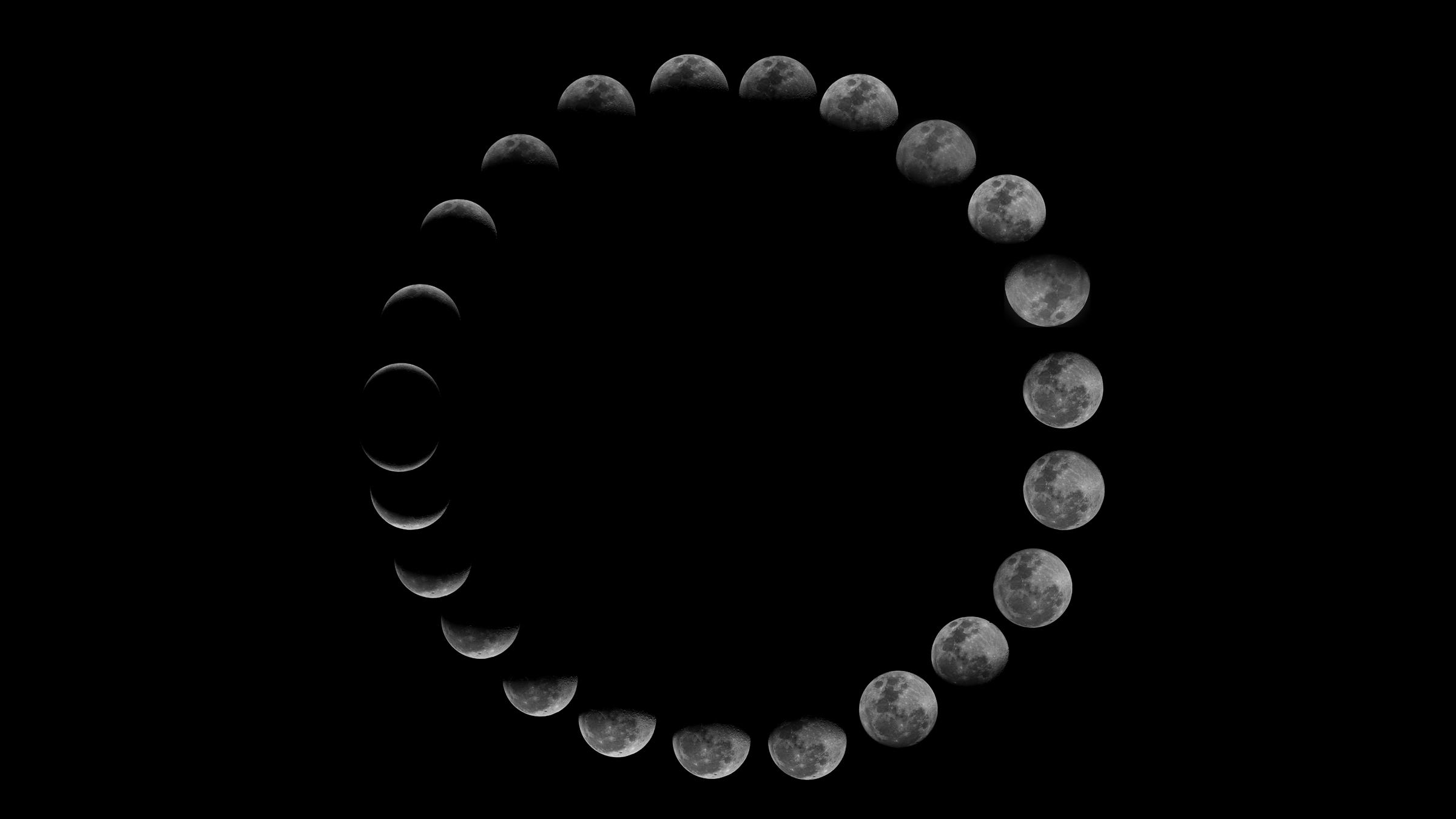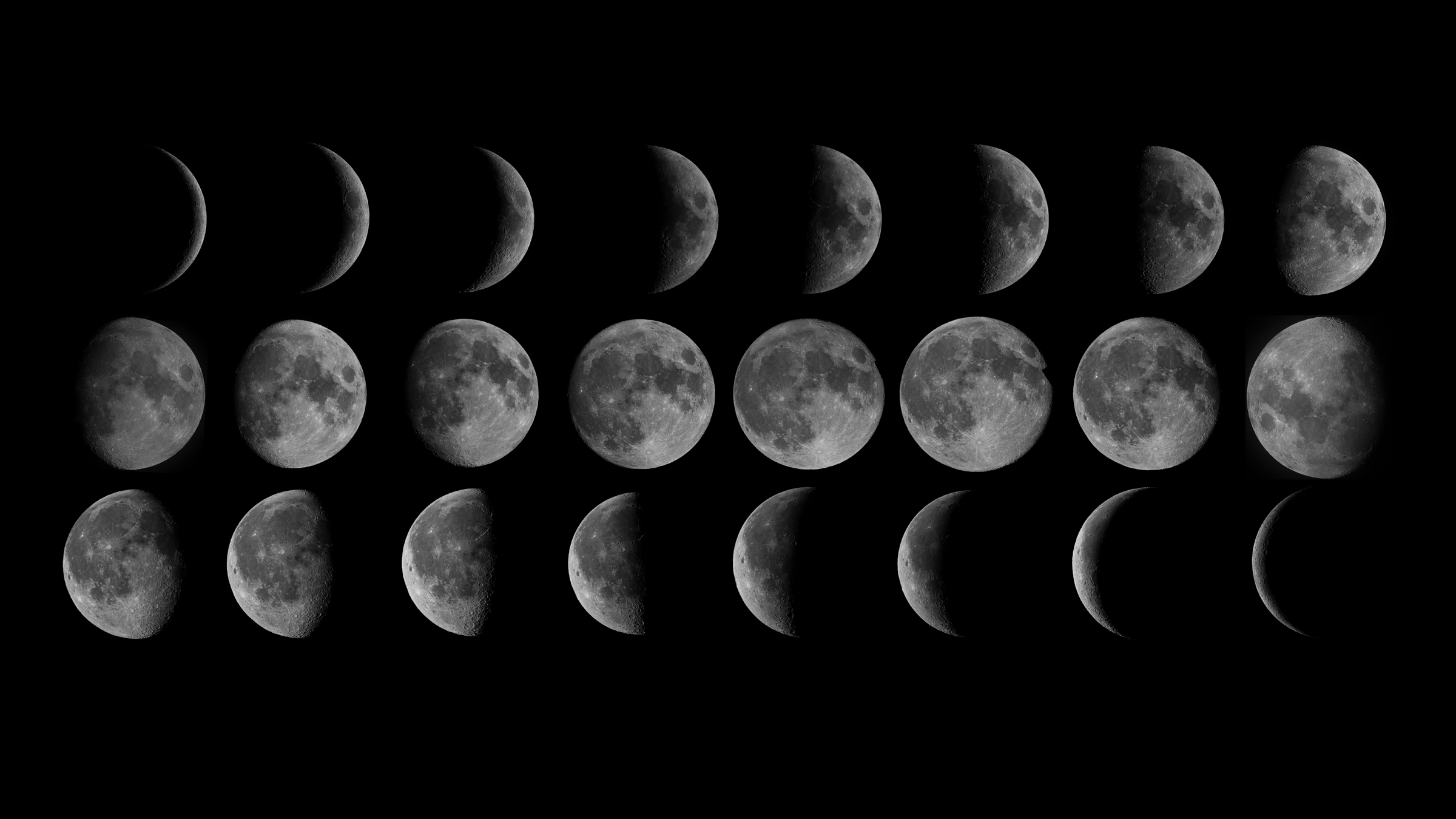
Does the moon rotate?
How come we never see the "dark side" of the moon?

Every 24 hours, Earth's surface is bathed in darkness and sunshine as the planet completes a single day. Sunrise and sunset happen like clockwork as Earth rotates steadily on its axis. But what about Earth's satellite, the moon — does it rotate, too?
The answer is yes, the moon rotates, but it does so much more slowly than Earth does. A "moon day" is around 29.53 Earth days, according to NASA. In other words, whereas Earth completes one rotation every 24 hours, the moon experiences a sunrise roughly every 709 hours.
As with many celestial bodies, the moon's rotating motion may be a remnant from its creation. One theory, called the giant-impact hypothesis, proposes that around 4.5 billion years ago, a body roughly the size of Mars smashed into the still-developing Earth, according to NASA. This theoretical object is known as Theia, and the heat from Theia's impact may have created magma oceans by melting the Earth's crust and caused Earth to eject spinning vaporized particles into space.
Related: How long would it take to walk around the moon?
According to the giant-impact hypothesis, these clouds of dust and gas were spinning from the force of the original collision. Eventually, these swirling particles came together, because mass attracts mass, and as the gas condensed it actually began to spin faster. Consider a figure skater who tucks their arms in as they spin on the ice. The skater's mass is more compact closer to their middle, so the skater speeds up. This is because their angular momentum is conserved – a product of the rotational force needed to rotate an object, or the moment of inertia, and angular velocity. In other words, it takes more force to rotate an object farther from the center of gravity. So, if the figure skater's arms are out, they spin slower, and when they change by tucking them in, they spin faster.
The moon has kept its angular momentum ever since the original collision billions of years ago. "Two spinning bodies smacked into each other, and the laws of physics tell us that the massive resulting dust cloud would stay spinning. Eventually, that spinning dust cloud condensed to form the spinning moon," said Daniel Moriarty, a lunar geologist at NASA Goddard Space Flight Center and the University of Maryland.
Unlike Earth, the moon does not have an atmosphere, so there is no air resistance to slow down moving objects; as such, once objects are spinning, they tend to stay spinning. Of course, there are other theories for how Earth got its moon. One is the capture theory, in which the moon was a wandering body, like an asteroid, that was captured by Earth's gravitational pull. In this theory, the moon was created somewhere else in the solar system and then began to orbit Earth as it was passing by, according to NASA, so it would have already had its own spin as it was pulled into Earth's gravitational field.
Sign up for the Live Science daily newsletter now
Get the world’s most fascinating discoveries delivered straight to your inbox.

Another theory is the co-formation theory, in which the moon was created at the same time as Earth. In this hypothesis, two massive objects five times the size of Mars crashed into each other. Earth and its moon then condensed out of the clouds of matter that resulted from the collision, NASA reported.
However, it is Earth that sets the speed of the moon's rotation. The moon completes one revolution in about 27 days — nearly the same time it takes for the moon to orbit Earth: 27.32 days. As a result, people on Earth only ever see one side of the moon. If a moon day were any longer or shorter, we would be able to see all of the moon's surface as the moon orbited Earth.
Related: Why does the moon have phases?
In fact, the orbit and rotation aren't perfectly matched because the Earth actually travels in an oval-like elliptical orbit. When the moon is at the point of its orbit closest to Earth, its rotation is slower than its orbit, allowing us to see an additional 8 degrees of its surface that we usually would, according to Space.com, LiveScience's sister site.
The illusion of the moon not rotating from our perspective is caused by tidal locking, or a synchronous rotation in which a locked body takes just as long to orbit around its partner as it does to revolve once on its axis due to its partner's gravity. (The moons of other planets experience the same effect.) Moreover, the moon isn't a perfect circle; it's lopsided. "The moon isn't symmetric," Moriarty told Live Science. "There are differences in mass and density between the hemispheres [of the moon facing toward and away from Earth]. The difference is so big that one side of the moon [its longer side] stays 'stuck' facing Earth due to gravity."
"So as the moon orbits the Earth, it rotates to keep the same side facing us," Moriarty said. "One rotation takes the same amount of time as one orbit, in other words, about a month." Put another way, Earth and the moon exert a gravitational pull on each other, and the gravitational force exerted is always strongest where the two bodies are directly facing each other, causing both Earth and the moon to stretch slightly as they're pulled in the direction of the other. As a result, the moon is stretched into an elliptical shape with its longest axis being tugged to always be facing toward us. This is also what causes Earth's tides to go in and out every day.
In effect, the moon may rotate very slowly, but its rotation is key to important events, such as the tides, on Earth.
Tidal locking also affects how planets and moons move. This means that the days on Earth and the moon were much shorter when these bodies first formed because both Earth and the moon revolved at a much faster rate than they do currently. A model by researchers at Harvard and the SETI Institute even estimates that the early Earth had a day as short as 2.5 hours at the time of its collision with Theia. However, because of gravitational attraction constantly tugging on the moon’s longest axis to face towards the Earth, the Earth's and moon's days lengthened over time.
Originally published on Live Science.

Jacklin Kwan is a freelance journalist based in the United Kingdom who primarily covers science and technology stories. She graduated with a master's degree in physics from the University of Manchester, and received a Gold-Standard NCTJ diploma in Multimedia Journalism in 2021. Jacklin has written for Wired UK, Current Affairs and Science for the People.









